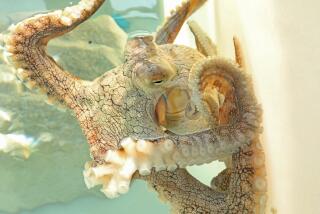Bill seeks to add free water to school menus
- Share via
In many California school cafeterias, there’s no free water to drink. Surprised?
“Everyone I talked to says, ‘You’re kidding,’ ” said state Sen. Mark Leno (D- San Francisco).
Leno has introduced legislation to change that. His bill requiring schools to offer drinking water at no charge to students has passed the Senate and Assembly and awaits the governor’s signature — a fairly sure thing because the governor sponsored the bill.
“As we all know, young people are constantly bombarded by advertisements and pressure from their peers to consume junk beverages that are high in calories and sugar. Yet many students do not have access to free, fresh drinking water at lunchtime,” Leno said in material promoting his bill.
“You just don’t imagine in our country in 2010 that there isn’t free water to drink while you are having a meal. But there isn’t,” said Kenneth Hecht, executive director of California Food Policy Advocates, an Oakland-based organization that supported the legislation.
Leno’s Senate Bill 1413 requires schools by next July to make fresh drinking water available where students get their meals. The bill provides no funding, and districts can make the case that they cannot afford to comply.
But the solutions can be inexpensive, advocates say. In small schools, that can mean putting water pitchers and cups on lunch tables.
Montclair Elementary School in Oakland has a “hydration system,” basically a faucet that students use to fill their own bottles with cold drinking water, said George Manalo-LeClair, a parent at the school and senior director of legislation at California Food Policy Advocates.
The system cost several hundred dollars and was paid for with PTA funds and other donations four years ago, he said.
Existing water fountains at Montclair didn’t have much pressure and “weren’t entirely clean” — a problem demonstrated every year in student science fair projects, Manalo-LeClair said. Besides, in many schools fountains are not close to the areas where students eat.
But had the money not been found, he said, pitchers and cups would have sufficed. “I don’t want people to think you need to raise money to get water to kids,” he said.
At least 40% of school districts that responded to an online survey said their students had no access to free drinking water in areas where meals are served, California Food Policy Advocates said.
Most schools in the Los Angeles Unified School District don’t have free water in eating areas, said David Binkle, deputy director of food services.
“We happen to think it’s a great option,” Binkle said. But he’s worried about the cost — 4 or 5 cents for a cup, plus any equipment, filters or water testing that might be needed.
A pilot program provided water at a few middle schools as part of a larger research project on obesity prevention. Researchers set up plastic dispensers with free chilled tap water and cups; students were also given reusable bottles, said Dr. Mark Schuster, one of the researchers and a professor of pediatrics at Children’s Hospital Boston and Harvard Medical School.
Students told researchers in focus groups that they wanted cold water, and they drank it, he said.
Even if fountains are nearby, they are not practical for hundreds of children eating lunch at the same time, Schuster said.
And although some schools sell bottled water in vending machines, he called it “a shame that in families where money is tight kids are using their spending money to buy bottled water.”
In New York City, food and beverage standards were established for all city agencies, including schools. Those call for water, tap water if possible, at meals.
Leno noted that water bottles are ubiquitous with many adults. If children start drinking water with their school meals, “they can create lifelong habits.”
Schools now must provide a drinking fountain for the first 150 students and then one for every 300 students over that, Leno said.
But L.A. Unified experienced unsafe lead levels in many of its drinking fountains a couple years ago and work is still underway to replace fixtures and add filters in many schools, said Neil Gamble, deputy chief facilities executive for the district.
One sure way to make water more alluring to children is to chill it, Manalo-LeClair said. “Cold water gets kids excited. They drink more of it.”
Leno and Manalo-LeClair said they had no information suggesting that children drink less milk at school when water is provided. California already restricts the sale of soda and some other sweetened beverages at schools.
Gov. Arnold Schwarzenegger has until Sept. 30 to sign the bill. Another bill before the governor, introduced by state Assemblywoman Julia Brownley (D-Santa Monica), would regulate beverages in childcare facilities by requiring water, limiting juice, eliminating sodas, and requiring 1% or skim milk for children older than 2.
mary.macvean@latimes.com
More to Read
Get the L.A. Times Politics newsletter
Deeply reported insights into legislation, politics and policy from Sacramento, Washington and beyond. In your inbox twice per week.
You may occasionally receive promotional content from the Los Angeles Times.











